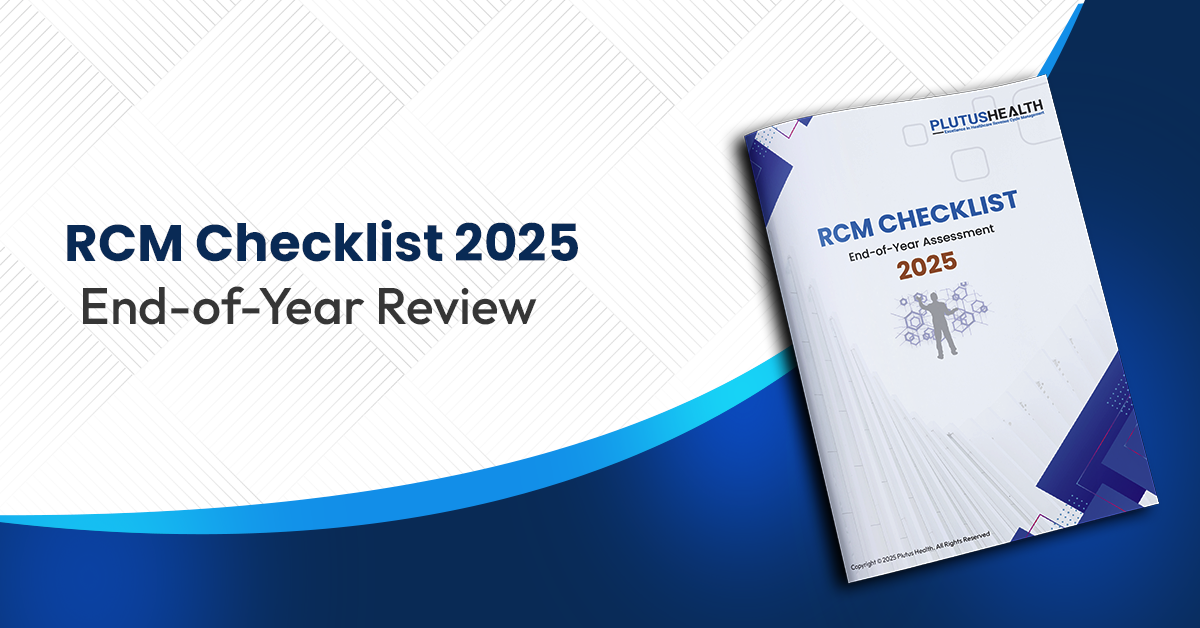Credit Balance Resolution
The credit balance is a liability that sits in the account receivable (A/R) folder and is considered important as the liability carries with it serious and real, compliance and financial risks. It is the responsibility of the medical billing service provider, to manage those risks. With the greater emphasis on billing and collections, there are growing volumes of credit balances that accumulate within A/R, and these unresolved credit balances represent a significant source of medical expense recoveries to healthcare Payers, while also in some cases signifying compliance risks and penalties.
It is often recommended, that Providers partner with a vendor to expedite and maximize credit balance refunds. The Healthcare Financial Management Association (HFMA) estimates that a small-to-medium-size Hospital generates approximately $2M in credit balances annually.
According to the Social Security Act, Section 1128J, any funds that a person/agency receives or retains under Title XVIII or XIX to which the person, after applicable reconciliation, is not entitled, constitutes an overpayment. These can include claims for services after benefits have been exhausted, payment for non- medically necessary services, duplicate payments,and payment of claims that exceeded a reasonable charge. These are usually caused by contractual 'over adjustments,' misapplication of payments, and overpayments.
Medical billing industry data shows that 35% plus of the credit balances are caused because of incorrect allowances posting. Federal Register, issued rules on credit balancing in March 2016 and as per the rules:
- Healthcare Providers should repay the Medicare over payments within (60) sixty days of finding the overpayment, but they can take up to six months to investigate and confirm suspected overpayments.
- Providers are responsible for repaying the identified overpayments that have occurred in the past six (6)years.
- Refunds claim adjustments, credit balance, etc., can be used to repay overpayments.
The Healthcare Financial Management Association (HFMA) says credit balances occur due to 3 major reasons:
55% incorrect posting of allowances
35% duplicate payments and overpayments by patients and payers
10% missed-postings
Selecting a Vendor
While choosing a credit balance vendor, the vendor must be given access to the Provider’s business offices across locations and a collaborative working relationship must be established with the administrative staff. The vendor should be equipped to provide online, on-demand reporting which includes, drill-down capabilities,error code analysis, and Provider trending. The vendor will need to compare results with in-depth root-cause analytics to uncover systemic problems, so they can be resolved and discontinued. The vendor must be capable to assure that all data and communications are secure and compliant with HIPAA regulations.
Planning an effective strategy
To develop a solid strategy for resolving over payments and preventing errors, the credit balance team needs to have an in-depth understanding of both internal processes and specific business objectives with the overall flexibility to customize an approach that fits an organization’s specific needs.One of the primary roles of a credit balance vendor is to examine billing data to pinpoint erroneous patterns that lead to overpayments. The most effective way to deal with credit balances is to identify the root cause of errors to prevent them from recurring.
Best Practices :
Highlighted below are few pointers which are summarized as best practices:
1. Identify true overpayments
2. Work balances from the oldest to newest
3. Analyze credit balances using :
- Patient admissions forms
- Payer remittance advice
- Patient A/R details
4. Identify if patient is an eligible medical beneficiary
5. Check if medical payment rules apply
6. Identify Primary payer and other liable insurers
7. Verify that all credit balances are due and refundable
8. Monitor staff compliance with policies/procedures
9. Identify preventable causes of credit balances
10. Seek professional outsourcing assistance, in case existing staff cannot handle credit balance resolutions
Role of Revenue Cycle Management (RCM)
RCM is a core component of fiscal responsibility. RCM credit balance review includes the identification and resolution of any credit balances that may have accrued during a billing cycle. A credit balance review is required and regulated by law and helps clean up unnecessary open accounts on the A/R. The RCM process ensures that every payment, credit, and adjustment is checked systematically across the entire A/R spectrum. Review of coding errors,incorrect billing or payment duplication is necessary to identify the source and close it.
Resolving credit balances can prove to be a costly and time-consuming activity. However,automation is the best way to improve workflow and make the best use of human resources. Most organizations may or may not have the automation technology or proper staff to take advantage of such technologies. It is best advised that healthcare organizations should consider engaging with third party specialists to handle it. These vendors will take a comprehensive look at patient records,make the transition to a technology-based credit balance management process and improve the resolution and bring in more efficiencies to healthcare organizations.
Credit balance accounts form part of the reimbursement environment, and resolving these credits is a huge task, and ignoring these credit balances can lead to larger problems. Overpayments going unresolved, sitting on the Provider’s books means Providers have inadequate staff to resolve these issues or challenges. In such scenarios, there is an acute dependency on vendors to process the amounts owed to the Payers.
Liked the blog? Share it
FAQs


ABA providers are grappling with high staff turnover (up to 65%), rising burnout, administrative overload, and stagnant reimbursement rates. These challenges directly impact care continuity, clinical outcomes, and operational performance.


Operational inefficiency costs ABA teams up to 10 hours per staff member per week, contributing to burnout, denied claims, and longer accounts receivable (A/R) cycles. These inefficiencies ultimately result in reduced revenue and patient dissatisfaction.


Burnout leads to costly turnover, lower client retention, and decreased productivity. Recruiting and replacing a BCBA or RBT can cost up to $5,000 per hire, plus months of lost revenue and disruption to morale.


High-performing ABA organizations invest in clear career pathways for BCBAs and RBTs, align compensation with market benchmarks, and foster peer-led mentorship, flexible schedules, and wellness programs.


Automation tools like Plutus Health's Zeus streamline eligibility verification, denial management, and billing, reducing manual workloads by 5–10 hours weekly per clinician and improving clean claim rates by 95%.


Outsourcing revenue cycle management can improve collections, reduce denials by up to 30%, and free clinicians from billing-related admin tasks, resulting in better client care and financial outcomes.


One $200 million ABA network partnered with Plutus Health to automate eligibility and accounts receivable (A/R) processes. The result: $2M reduction in legacy A/R and a 97% Net Collection Rate.


By improving operational efficiency, investing in technology, and ensuring workforce stability, ABA leaders can align outcomes with reimbursement. Plutus Health supports this transition with scalable RCM and automation strategies.
FAQs


ABA therapy billing is the process of submitting claims to insurance or Medicaid for Applied Behavior Analysis services provided to individuals with autism or developmental disorders. It includes using correct CPT codes, proper documentation, and adherence to payer-specific policies.


Common CPT codes for ABA therapy in 2025 include:
- 97151 – Assessment and treatment planning
- 97153 – Direct therapy with the patient
- 97155 – Supervision and modification of behavior plan
- 97156 – Family adaptive training
- Always check with payers for any annual changes.


To bill Medicaid for ABA services, providers must ensure credentialing is complete, services are pre-authorized, and claims use the correct codes and modifiers. Medicaid requirements vary by state, so always follow state-specific billing rules.


Common ABA billing mistakes include:
- Incorrect or missing CPT codesplan
- Lack of documentation or treatment
- Uncredentialed providers rendering services
- Submitting duplicate or late claims


Without proper credentialing, providers can’t get reimbursed. Insurance and Medicaid require that BCBAs, RBTs, and organizations are credentialed and contracted. Delays in credentialing often cause revenue losses and claim rejections.
FAQs


CMS proposes a 2.4% increase in Medicare ASC payment rates, contingent on meeting ASCQR quality reporting requirements. Plutus Health helps ASCs meet these compliance benchmarks by integrating quality reporting data into RCM workflows, ensuring eligibility for full payment updates.


The ASC Covered Procedures List will expand by 547 procedures, including cardiology, spine, and vascular surgeries. Plutus Health supports expansion into new service lines by customizing RCM processes for high-acuity procedures, minimizing claim denials during the transition.


Site-neutrality narrows the payment gap with hospital outpatient departments, enhancing ASCs' cost-efficiency appeal. Plutus Health helps leverage this advantage in payer negotiations by providing performance dashboards and cost-justification analytics to secure stronger reimbursement terms.


Complex procedures increase denial risk and slow cash flow. Plutus Health's automation-first RCM model delivers 95%+ clean claim rates, reduces A/R days, and safeguards margins, even as your case mix becomes more complex.
FAQs


A hybrid RCM model combines in-house tasks like scheduling, intake, and patient communication with outsourced billing support for claims, denials, and A/R follow-up. Plutus Health enables this model with automation and expert teams.


Frequent CPT code updates, variable session lengths, high no-show rates, and sensitivity around patient collections make behavioral health billing uniquely challenging. Hybrid RCM helps strike a balance between compliance and patient care.


Tasks requiring patient interaction—like intake, eligibility checks, copay collection, and documentation—are best kept in-house, while backend processes can be outsourced.


Outsourcing denial management, claims scrubbing, and payment posting improves clean claim rates, reduces A/R days, and scales capacity without adding staff.


Plutus Health delivers 97%+ clean claim rates, AI-powered denial prediction, and 48-hour claim turnaround. Our hybrid RCM solutions provide behavioral health CFOs with visibility and control, while enhancing financial performance.
FAQs


Payment complexity, high out-of-pocket costs, increasing denials, and value-based care requirements are pushing providers toward more transparent, tech-supported payment systems.


Patients now act like consumers. They expect clear cost estimates, simple bills, digital payment options, and flexible financing.


AI, automation, and digital tools streamline estimates, reduce denials, support payment plans, and allow faster collections through mobile and online payments.


Complex billing questions, insurance confusion, and financial stress require a compassionate approach. Advocates guide patients and protect trust in clinical care.


Plutus Health supports providers with AI-driven denial prevention, predictive analytics, digital payment tools, patient financing, and a seamless platform, such as AnodynePay.


















































